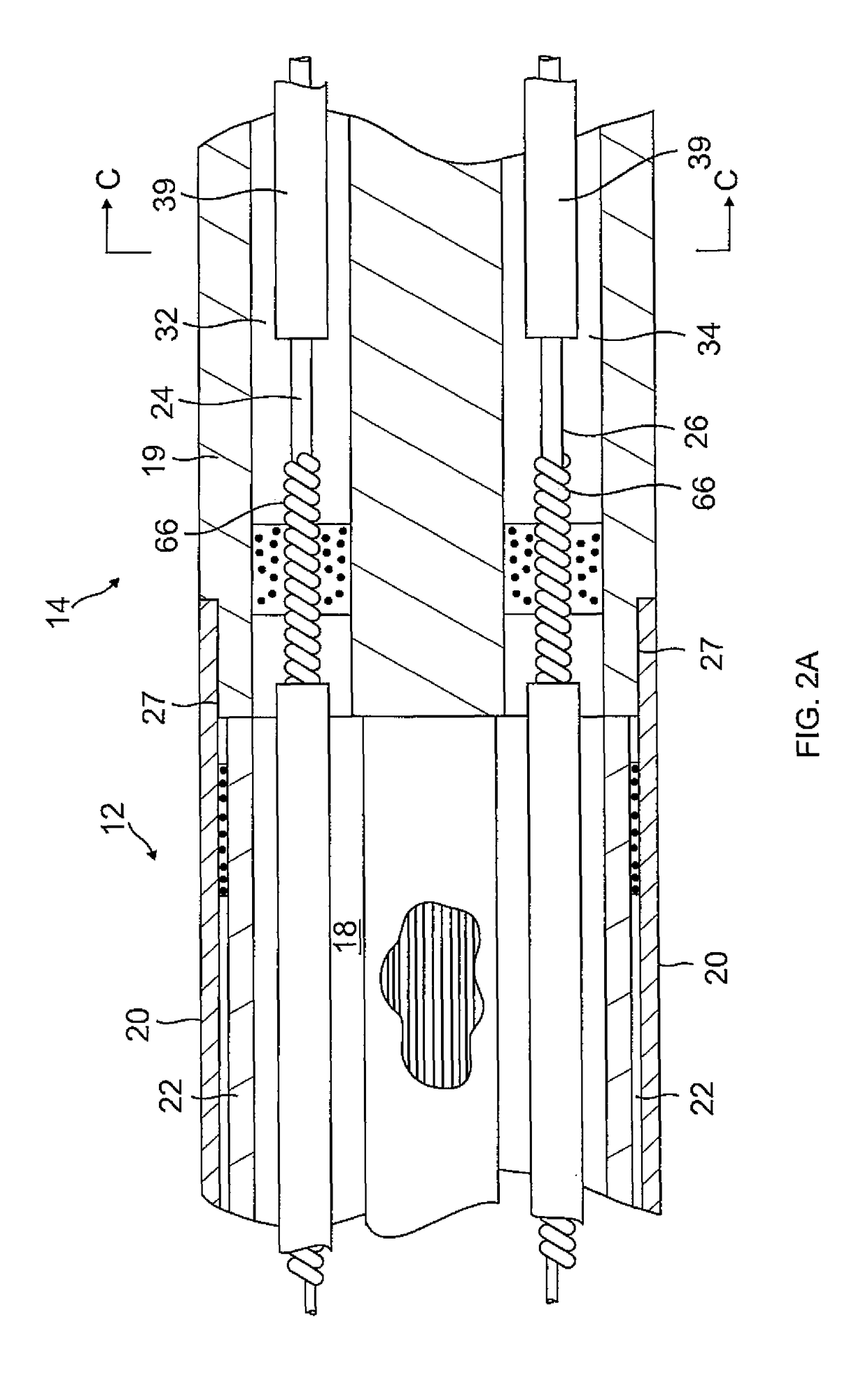Catheter with high density electrode spine array
a high-density electrode and spine array technology, applied in the field of catheters, can solve problems such as asynchronous rhythm and disruption of the normal cardiac cycl
- Summary
- Abstract
- Description
- Claims
- Application Information
AI Technical Summary
Benefits of technology
Problems solved by technology
Method used
Image
Examples
Embodiment Construction
[0030]As shown in FIG. 1, the catheter 10 comprises an elongated catheter body 12, an intermediate deflection section 14, a distal electrode assembly or matrix 15, and a deflection control handle 16 attached to the proximal end of the catheter body 12. In accordance with a feature of the present invention, the distal electrode matrix 15 has a plurality of spines 17 that generally lie within a common plane akin to a broom having bristles that generally lie within a common plane.
[0031]With reference to FIGS. 2A and 2B, the catheter body 12 comprises an elongated tubular construction having a single, axial or central lumen 18. The catheter body 12 is flexible, i.e., bendable, but substantially non-compressible along its length. The catheter body 12 can be of any suitable construction and made of any suitable material. In some embodiments, the catheter body 12 comprises an outer wall 20 made of polyurethane or PEBAX. The outer wall 20 comprises an imbedded braided mesh of stainless stee...
PUM
 Login to View More
Login to View More Abstract
Description
Claims
Application Information
 Login to View More
Login to View More - R&D
- Intellectual Property
- Life Sciences
- Materials
- Tech Scout
- Unparalleled Data Quality
- Higher Quality Content
- 60% Fewer Hallucinations
Browse by: Latest US Patents, China's latest patents, Technical Efficacy Thesaurus, Application Domain, Technology Topic, Popular Technical Reports.
© 2025 PatSnap. All rights reserved.Legal|Privacy policy|Modern Slavery Act Transparency Statement|Sitemap|About US| Contact US: help@patsnap.com



